There are several factors that improves strength of currency (see this flow chart). When we talk about currency strength – a stronger currency is better, right?
But in the world of economics this is not always the case. Majority countries prefer to keep their currency weak over USD. We will see why…(here)
Why I researched this topic? We were having a discussion about valuation of Pakistani Rupee compared to Indian Rupee.
We Googled and found that 1 INR was equivalent to 2.11 Pakistani Rupee.
The conclusion was that, Pakistani Rupee is weaker than Indian Rupee. But then somebody questioned that which currency is the costliest (strongest) vs INR? We Googled again. List of few costliest currencies were as below:

In this article we will try to understand the process of how a currency becomes strong or weak. We will also talk about pros ad cons of weak and strong currency (here).
Topics:
- The Process: Exchange Rate Fluctuations
- INR/USD Exchange Rate in Last 10 Years
- Factors Determining Strength of Currency
- Effects of Weaker Currency
- Benefits of Strong Currency
- Conclusion
The Process: Exchange Rate Fluctuations
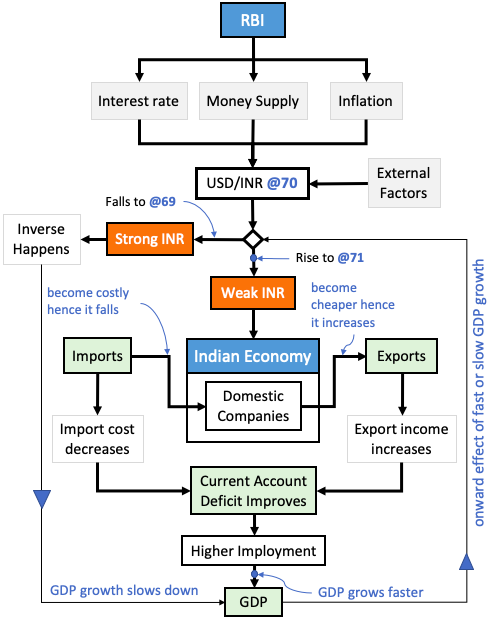
We all know that exchange rates fluctuate. The value of INR compared to USD change every day. This is a visible episode. But what goes behind the scene is more interesting. What makes the exchange rate fluctuate? What is the impact of currency fluctuation?
We will try to answer these two questions in this article. But before we go into those details, allow me to explain briefly what is depicted in the above flow chart:
- Indian Economy: Two constituents of Indian economy is shown (a) RBI and (b) Domestic Companies. RBI (Central Bank of India) takes steps which stimulates the currency’s demand or supply. When demand for a currency grows, currency (INR) becomes stronger and vice versa. Know more here.
- Weak INR: When INR weakens compared to USD, it has two impacts (One good and other bad). Bad, it decreases purchasing power of a nation. Good, it improves the current account deficit, generates more employment stimulating faster GDP growth. Read: effects of weak currency..
- Strong INR: Stronger INR also has its own pros and cons. For a developing country like India, stronger INR means less exports. This leads to current account deficit, low employment rate, and slower GDP growth. Pros of strong INR is improved purchasing power. But in a country like India where majority are poor, this benefit is felt less in short term. Read: Benefits of strong currency.
INR/USD Exchange Rate in Last 10 Years
In last 10 years, the exchange rate between INR/USD has gone up by 59.91%. It means in these years the INR has become weak compared to USD.

In Mar’10 INR was trading at Rs.45.93 w.r.t a US dollar. Today in Mar’20 (after 10 years), INR is trading at Rs.73.45 w.r.t a US dollar. This is a Rupee devaluation of 59.91%.
In Mar’2014, in one of the election rallies of BJP, Narendra Modi (now our PM) blamed UPA government for devaluation of INR from Rs.45 levels to Rs.62 levels. Since 2014, BJP is in power in India and Narendra Modi is the PM. Even then the Rupee devaluation continues.
What is the cause of this devaluation? What wrong India is doing that its currency is becoming weaker? Why, even the so called non-corrupt BJP, is not able to tame the weakening of INR?
Strength of currency (say INR) is not only dependent on India’s internal economy but also on external factors. Indian Government can control Rupee’s exchange rate by controlling internal economics only to an extent. If external forces dominate, less can be done internally.
As INR follows a free float exchange rate, its valuation is more effected by external factors. Example: When INR fundamentals remains same, but USD becomes strong, this will devalue INR (more here).
Factors Determining Strength of Currency

In a free float rate scenario, influencing currency rate is difficult. May be it is possible for countries like China which has huge foreign reserves (US dollar and US Treasury Bills) – Top 10 Forex reserve countries.
- If China sells US Treasury Bills, USD will become weak and Chinese Yuan will become strong.
- If China buy’s US Treasury Bills, USD will become strong and Chinese Yuan will become weak.
But for India, it can influence the rate of INR only marginally. There could be three ways of doing it (Read: Functions of RBI):
Local Factors
- Changing Money Supply: RBI does it by lowering or raising the mandatory Cash Reserve Ratio (CRR) for commercial banks. When CRR limit is reduced (currently it is 4%), banks have more money for lending. This increase spare money with the bank. When CRR limit is raised the effect is vice versa. [Note: Money supply can also be increased by printing more notes]. When banks have more money, more loans are issued. People/business in turn spend more (control overspending). When spending increases, GDP grows faster. Foreign investment flows in. Demand for INR increases & it becomes stronger.
- Controlled Inflation: Small inflationary growth is good for the economy. It can also strengthens the domestic currency. When inflation is low, and GDP is growing at a reasonable pace, it is a sign of healthy economy. Foreign investors like to invest in such an economy. They will buy government bonds, stocks, real estate etc. This activity creates more demand for local currency (USD comes in to exchange INR). Increase demand for currency (say INR) will strengthen it.
- Interest Rates: This is another tool (Repo Rate) which government alters to control inflation and economic activity. When repo rate is low, banks borrow more money from RBI. When banks have more money, they lend more money to people/business. This way spending increases in the country, hence government collect more taxes. More spending also leads to higher GDP growth (GDP & tax revenue). A balance between GDP growth and low inflation will bring in more foreign investments in India. This leads to a stronger Indian currency.
External Factors
Externally, strength of local currency (INR) is influenced by global demand and supply of USD. Often, the influence of external factors out-powers the effect of internal factors. This is one reason why INR has been devaluing since last 10 years. Allow me to explain this with real life examples:

- USD is Global Currency: US dollar is a global currency. More than 50% of all global transactions are done in USD. Moreover, all major economies of the world keeps USD as their reserves. This way USD is always in demand. Hence it is only logical that USD becomes stronger over time. As a counter effect it devalues INR with time.
- Crude Oil Imports: Almost 85% of total crude oil demand of India is met from imports (in exchange with USD). To pay for crude oil imports, India has to maintain high USD reserves. Hence, Indian INR is constantly used to buy USD in forex market. This high demand for USD eventually puts negative valuation pressure on INR.
- Global Crisis: Take example of 2008 subprime mortgage crisis. This problem originated in USA. As a result, US was also printing USD’s to boost spending and GDP growth. As a result USD valuation should have drastically fallen. But on the contrary USD got stronger post 2008 crisis. Why? Because USD is a major portion of foreign exchange reserves of many countries. If value of USD will go down, it will destroy the world economy. Hence during any crisis situation, countries tend to hoard more USD. This is done both to prevent the value of their “reserves”, and also to keep USD’s valuation stable.
[Note: If USD devalues, USD reserves parked in countries like China, Japan etc will also fall in value. It is in interest of these countries to keep the USD strong always. Hence in times of crisis they buy more USD]
Top 10 Countries with Highest Forex Reserves
| SL | Country | Reserves (USD Bn) |
| 1 | China | 3,115.00 |
| 2 | Japan | 1,342.30 |
| 3 | Switzerland | 846.62 |
| 4 | Russia | 563.10 |
| 5 | Saudi Arabia | 501.61 |
| 6 | Taiwan | 479.13 |
| 7 | India | 476.12 |
| 8 | Hong Kong | 434.20 |
| 9 | South Korea | 408.80 |
| 10 | Brazil | 356.88 |
In nutshell, global demand of USD has been on rise since last several decades. There was a steep surge in demand for USD after 2008 financial crisis, 2010 Greece debt crisis, and 2016 Brexit Referendum.
Hence, it is not a surprise that in last 10 years INR has become so weak compared to USD. In fact it will not be wrong to say that INR remains as it is, but USD has comparatively become stronger.
Effect of Weaker Currency
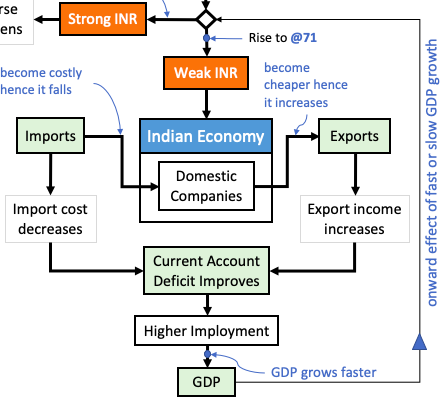
Weakening currency is not always a bad thing. Majority countries prefer to keep their currency weaker w.r.t USD. There are several benefits of doing so. Lets see few benefits of weakening domestic currency:
Benefits of weak currency
- Exports Become Profitable: Suppose a company exports fabrics to USA at $10/piece. Hence the company earns Rs.700/piece (@Rs.70 USD/INR exchange rate). Suddenly the USD/INR exchange rate changed from Rs.70 to 73 per USD. This way the company will earn more for each piece sold at $10/piece (Rs.730 @Rs.73/USD). So, when Rupee devalues, exporters make more money.
- Imports Become Expensive: Suppose an Indian company imports bauxite from China at $35/tonne (=Rs.2,450 per tonne @ INR/USD of Rs.70). Now suppose the INR/USD shoots to Rs.73. In this scenario the company will have to spend Rs.2,555 per tonne (=$35*73). The import cost for the company has increased. So, when Rupee devalues, the company is motivated to source bauxite internally (overall imports volume will fall).
- Domestic Demand Increases: Two situation will trigger a surge in domestic demand. When exports increase, companies will make more money. Hence employees will get better compensation. Similarly, when imports fall, domestic demand increases (like for Indian bauxite). This further improves the domestic economy. Higher demand and more spending will trigger economic activity and faster GDP growth.
- Current Account Deficit: When exports increase and imports decrease, the country’s current account deficit improves. This will also reflect in increased forex reserves of the country.
Out of all benefits of devaluation, there are couple of serious drawbacks. One is domestic inflation and other is low purchasing power. Lets know more about these two repercussions:
Drawbacks of weak currency
- Inflation: Surge in demand and increased spending will lead to inflation. Export-triggered inflation is mostly stubborn. Why? Because when companies has increasing demand globally, they do not have incentive to reduce prices domestically. Read: History of inflation in India.
- Low Purchasing Power: Suppose you earn in INR. As Indian economy is doing well (due to weakening Rupee), you got a handsome pay rise. Hence you decided to do another vacation in USA. You did a USA vacation in 2014 wherein the cost was Rs.15,00,000 which is $23,800 (@INR/USD @Rs.63). Hence you thought that the same Rs.15,00,000 should be enough in 2020. But when you checked, Rs.15 lakhs could now buy only $20,470 (@INR/USD @Rs.73.28). This is an example of reduced purchasing power due to currency devaluation. Read: What is dosa economics?
Benefits of Strong Currency
Should an economy aim for stronger currency? Immediate effect of currency becoming stronger is disadvantageous. But over long term, a strong currency does more benefits to its domestic economy.
Unfortunately no government is ready to take this long term call at a cost of immediate risks.
But if citizens become aware of the benefits of stronger currency, probably government will also be motivated to take corrective steps. Here are few benefits of stronger currency:
- Cheaper Imports: When a currency is strong, it can buy quality products and services from overseas countries at lower costs (compared to domestic prices). This can substantially bring down the price of goods and services.
- Low Inflation: Due to cheaper (but quality) imported goods and services available for citizens, inflation remains low & within control at all times.
- High Purchasing Power: Stronger currency makes its citizens feel wealthy. Suppose a vacation within USA will cost $10,000. If that amount is converted into INR it will yield Rs.7,30,000 (@Rs.73/USD). An American can enjoy a lavish vacation in India in this budget. Similarly, shopping with USD in India can fetch much higher satisfaction.
- High Currency Demand: A strong currency which is backed by controlled inflation, high GDP growth rate, and high employment rate is bound to see a surge in demand. A currency which is in high demand can become a potential “global currency” in times to come.
- Cheap Debt: This is true for the government. Strong and stable currency see overseas investment in government bonds (like in US T.bills). These investments does not desire high interest rates. They will continue to buy the bonds even if the rates are low. Why? Because they just park their funds in strong currency (like USD). As the currency is in high demand, on a later date, the same currency will fetch higher returns as exchange rate becomes high. [A strong currency can help its domestic government to raise cheap capital. Even investors make profit by selling their holdings when exchange rate moves up. It is a win-win situation for all].
Conclusion
A country that imports more than it exports has more demand for dollar. Like India imports more than it exports. This is one reason why 1 Indian Rupee is = 73.28 USD (Mar’2020).
Smaller and less industrialized countries like the Bahamas (1 Bahams$ = 1US$), are not as dependent on imports (like crude oil) as India. Their current account deficit (CAD) is not as high. When CAD is near zero, the currency tends to remain strong (like = 1 USD).
But the strength of a currency is not a real reflection of the economic well-being of a nation. Along with strength of a currency, other factors must also work at tandem. Other factors are GDP growth rate, high employment rate, low inflation etc. Let’s compare GDP of Bahamas and India:
| Description | Bahamas | India |
| GDP (USD Bn) | 12.42 | 2,719.00 |
So first conclusion is, exchange rate of currency talks less about economic strength of a nation. The second conclusion is, the biggest factor that determine the strength of a currency is trade deficit. The bigger is the deficit the weaker a currency will become compared to USD.
Stronger currency is great, but even weaker currency has its own benefits.
[P.Note: A country (like Kuwait, Bahrain, Oman, Jordan etc) which will see lot of USD coming in in form of investments or purchases will see its currency becoming stronger]
Suggested Reading:

![How Wealth Accelerates After Reaching One Crore [Compounding]](https://ourwealthinsights.com/wp-content/uploads/2024/09/How-Wealth-Accelerates-After-Reaching-One-Crore-Thumbnail-768x443.png)
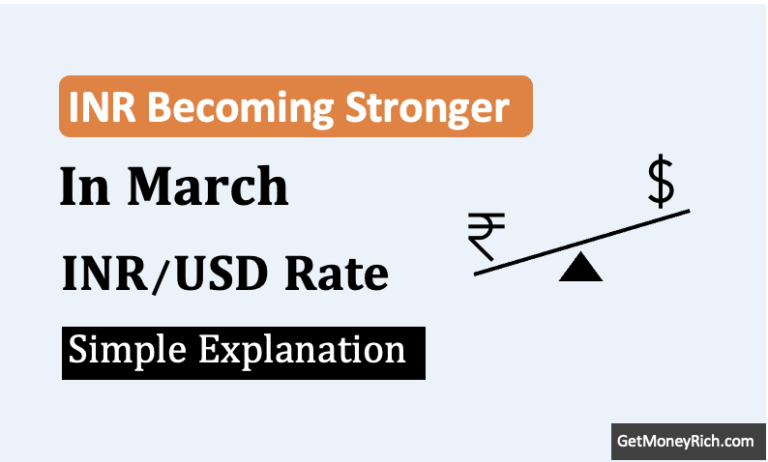
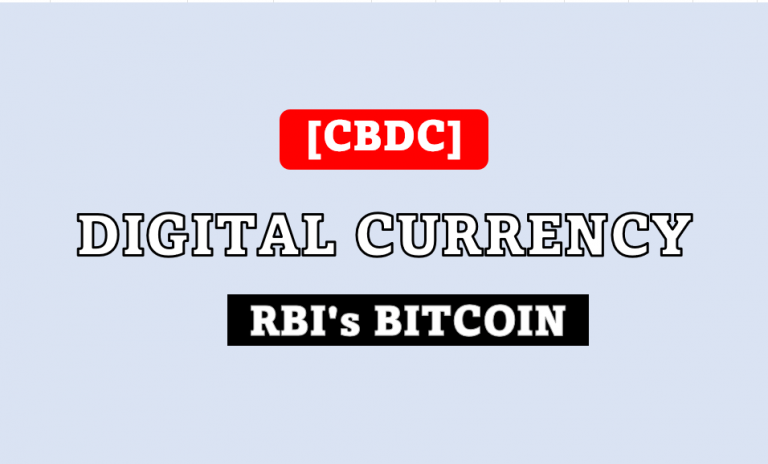
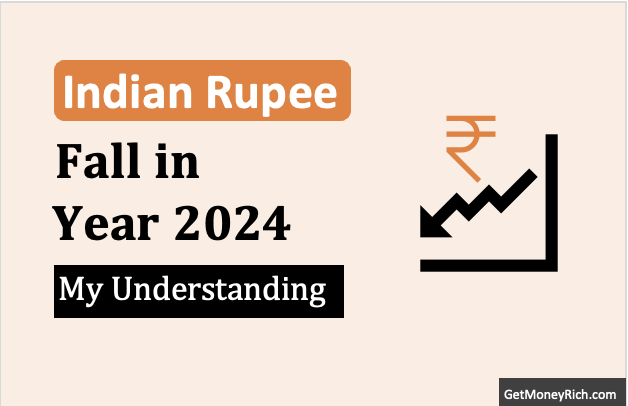

A great read, I am thankful to you for publishing this informative article.
Regards!
Article is a masterpiece. I have included the Article in my book “INDIA’S FUTURISTIC DEMOCRACY – THREATS OF CONSTITUTIOINAL GAPS AND DIGITAL
Prahalad Rao: Sr. Advisor & Author July 04.2022
Article is a masterpiece. I have included it in my book “INDIA’S FUTURISTIC DEMOCRACY – THREATS OF CONSTITUTIONAL GAPS AND DIGITAL ERA” believing I have your consent to the same, being a matter public interest. The book is under completion stage.
There was a news item of PTI last updated July 01, 2022 publishing FM’s comments on the sliding rupee against USD. She is stated to have said we are ‘relatively better placed than other global currencies against the greenback.’. We are more concerned about the high margin of monetary benefit the exporters are able to get that also comforts the political parties. Our reluctance to move aggressively to post INR stronger if not strongest is self-desired; – here lies the National Pride but that is absent in our governing and business culture – self is more important than service to the people and the nation. Varshith says in her (or his) comments 26-05-2020 at 9:04 pm given above ‘I am 14 years old and i wand to make 1inr=1usd in future’. Great. Wish you all success. That spirit is yet to be born in us. I hope futuristic democracy of the country would be able to prove her expectation.
Thanks
Prahalad Rao, New Delhi
Start cycling dont use petrol, diesel and gas cylinders. Also cook on wood.
This is what our politicians should know , and everyone should just focus on creating and eating from our own land , the things which are needed to be exported should be discouraged by the citizens & they should know what their country is incapable of giving them .
can someone explain me – how morocco currency rate stronger than India
That is not how strength of a currency is measured. Going by that logic, US currency is 1100 times stronger than South Korean currency.
A STRONG INDIAN RUPEE IS IN INDIA’S BEST INTERESTS. THE SOONER THE INDIAN PEOPLE REALIZE THIS THE BETTER THE CHANCES THAT THE INDIAN GOVERNMENT WILL BE COMPELLED TO TAKE APPROPRIATE POLICIES TO STRENGTHEN THE RUPEE.
Thanks for the input
Very informative article, thank you!
I cannot apprehend the logic of your explanations why Indian Rupee not performing since 1947.
IMHO, strength of your currency reflects the economic health of India.
Compare and contrast with Singapore’s economy vis-a-vis performance of Singapore dollar.
Exchange rate of a currency depends on:-
1. Trade balance with other countries. More trade surplus, bring in more foreign reserve.
2. FDI. More net inflow of FDI, more demand of your currency.
3. Fiscal deficit. If Indian govt spends more than it collected every year, borrowing will kill.
4. Monetary policy of RBI. Printing more money to make good budget deficit kills.
5. Strong foreign reserve to provide confidence in your currency. Check how much is Singapore foreign reserve in relation to its GDP.
6. Sustainable and consistent economic growth, need not be 10% a year for high growth rate will attract high inflation. Chicken and egg vicious cycle.
7. High value of Singapore dollar is not fatal to economy. Check how Singapore become huge capital exporter compare with India.
You may think Singapore is an extreme example.
Why not compare with China, using the same parameters as above.
Likewise, you can also compare with a sunset economy like UK.
US is slightly different, because US dollar dominates world trade right now.
If one day, nobody (including other countries’ Central Bank) wants to buy US Bond and Treasury-Bills, and US dollar is no more major international currency mode of settlement, US dollar will plummet and hyperinflation will take place in US.
Very well explained. Thank you.
I am 14 years old and i wand to make 1inr=1usd in future
You will need a “wand” to make that happen
It’s called risk-taking — if people are willing to take short terms risks and losses, govt can be confident enough to attempt to increase currency strength. However, like Mr. Manish Choudhary, the author of this article says, a strong currency isn’t always the golden standard. The Bahamas comparison showed that well. Despite a higher currency strength, things like GDP wouldn’t necessarily change proportionally to it — for that, people need to spend more money. Another good example supporting that is Western Europe after WW2. Although their cities and economies were in shambles, liberalized and free-market policies, along with a consumer culture encouraged spending and financial risk-taking, which raised their GDPs eventually. So although India does have a rather weak currency, it’s not all over, since the Indian GDP is really strong — the fifth strongest actually — and showing that strength in another field — the Indian military is the fourth strongest.
Good attitude, I’m with you, btw I’m 12
Thank you very much for detailed information, it is really helpful to understand the economy drive.
Thanks for posting your comment.
Informative article.
Thank you for sharing.
Thanks